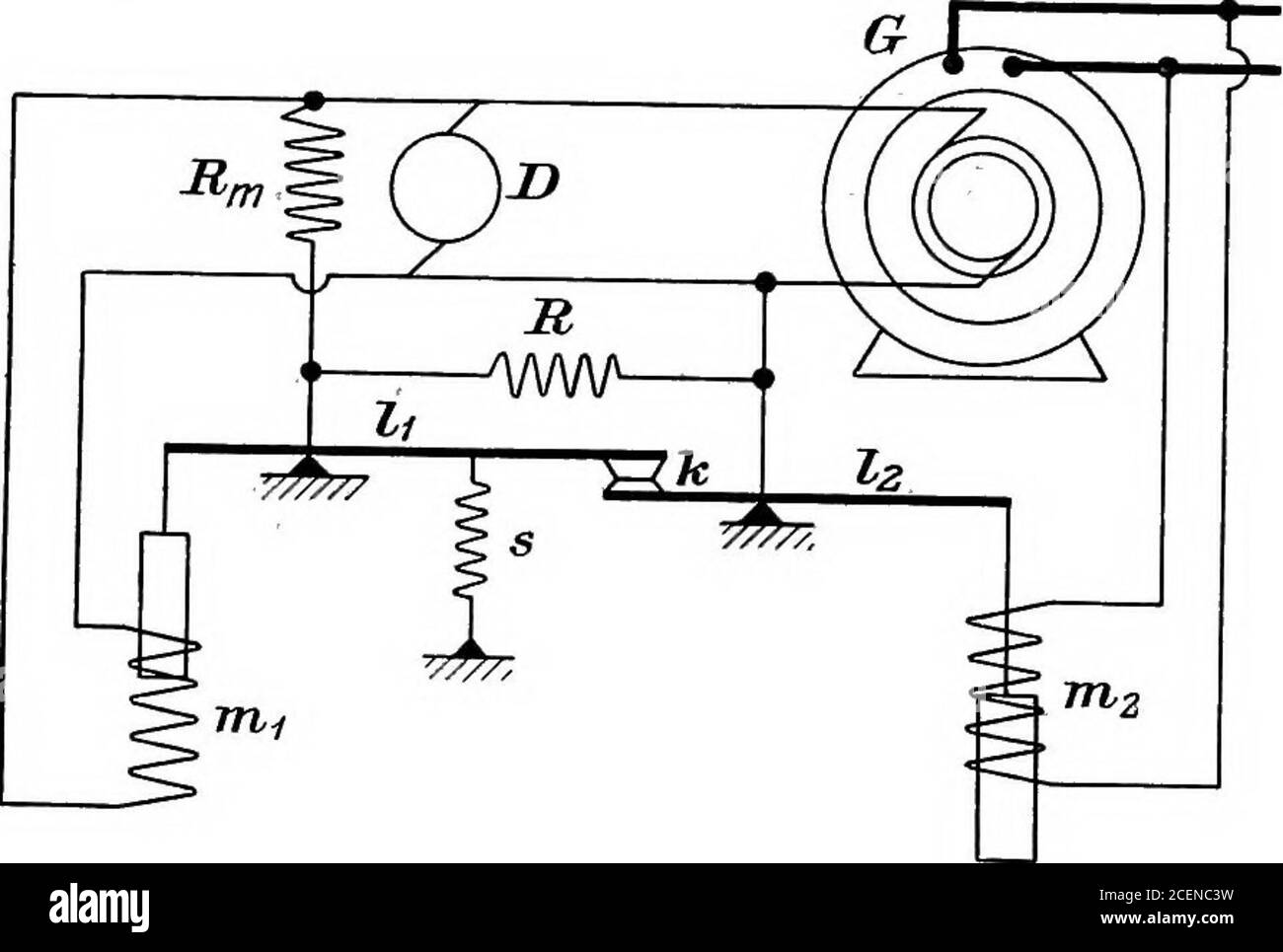. A text-book of electrical engineering;. which is in series with the fieldwinding J?^ of the dynamo is periodically short-circuited by the contact k,so that the field current is constantly pulsating. The rocking lever l^ issubjected to two opposing forces, due respectively to the spring s and thedownward pull on the soft iron core of the electromagnet w^ the coil ofwhich is connected across the terminals of the dynamo D. The core of theelectromagnet m^, is below its coil so that the upward attractive force isin opposition to the force of gravity. The coil of m^, is connected across thealterna

Image details
Contributor:
Reading Room 2020 / Alamy Stock PhotoImage ID:
2CENC3WFile size:
7.1 MB (168.1 KB Compressed download)Releases:
Model - no | Property - noDo I need a release?Dimensions:
1926 x 1297 px | 32.6 x 22 cm | 12.8 x 8.6 inches | 150dpiMore information:
This image is a public domain image, which means either that copyright has expired in the image or the copyright holder has waived their copyright. Alamy charges you a fee for access to the high resolution copy of the image.
This image could have imperfections as it’s either historical or reportage.
. A text-book of electrical engineering;. which is in series with the fieldwinding J?^ of the dynamo is periodically short-circuited by the contact k, so that the field current is constantly pulsating. The rocking lever l^ issubjected to two opposing forces, due respectively to the spring s and thedownward pull on the soft iron core of the electromagnet w^ the coil ofwhich is connected across the terminals of the dynamo D. The core of theelectromagnet m^, is below its coil so that the upward attractive force isin opposition to the force of gravity. The coil of m^, is connected across thealternator terminals or station bus-bars, the p.d. between which is to bemaintained constant at all loads. The position taken up by the core of m^and therefore the position of the lever l^ depends on the p.d. between thebus-bars; if the latter faUs, the core falls, and the bottom contact at krises. When k is closed, R is short-circuited and the terminal p.d. of the dynamoincreases, causing m^ to exert an increased downward pull and thus opening. Fig- 351 the contact k against the tension of the spring s. The field rheostat beingno longer short-circuited, the p.d. of the dynamo falls, the pull exerted bym-^ decreases causing the contact k to close again, upon which the cyclerecommences. If now the p.d. of the bus-bars falls, due say to an increasingload on the station, m^ allows its core to drop slightly, thus raising the bot-tom contact at k. This causes the next period during which k is closed tobe longer than usual, with the result that the p.d. of the dynamo reachesa higher value. The upward movement of the bottom contact of k stretchesthe spring s and necessitates a greater current in m-^ before the contact his opened. The p.d. of the dynamo therefore pulsates about a higher meanvalue. The field current of the alternator is therefore increased until thebus-bar voltage is restored to its normal value. The operation will be better understood from a consideration of Fig. 352in which